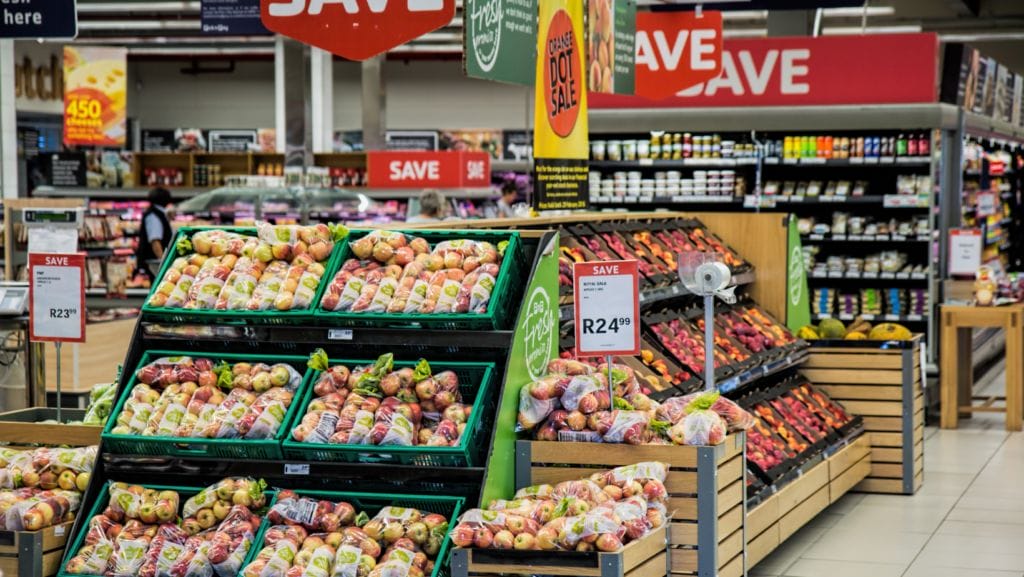If you’re worried about restricting yourself to a diet of canned beans and noodles due to rising food costs, you’re not alone.
In the U.S., Morning Consult reported that 53 percent of American survey respondents have changed their food and beverage intake as a result of inflation.
Costs are rising, but you still need to eat and feed your family. So here are some clever and resourceful ways to reduce your bills at the grocery store right now.
Shop For No-Name Items
Steer clear of brand names when it comes to food and you’ll save big. Things like canned items, cereal, flour, sugar and spices can cost up to 30 percent more if you buy the popular brands. Look for the in-house brand and rack up the savings.
A great example: Giant Eagle’s in-house peanut butter. It’s just $2.49 for a 16-oz. jar. A 15.5-oz. jar of the popular brand Jif sells for a whopping $3.49. A dollar less for more PB is a big deal these days.
Get this from Toughnickel.com: “Generic foods are about 30 percent cheaper than name brands.” If your cart is full of name-brand items, you might be able to save a lot of cash if you select a different product.
Get Familiar With Your Store’s Sales Cycle
This requires a little tracking on your part, but it will be worth it. Create a spreadsheet with items you purchase often and note the costs on each trip to the store. After a little tracking, you’ll be able to spot trends in no time, which will allow you to make adjustments to your monthly and weekly meal plans.
For example, if you know that beef prices are way up but there’s a sale on pork, you can tweak the menu to accommodate a different source of protein. Or maybe chicken will be on sale next week.
You can also download the app RedFlagDeals to get notifications about coupons and price drops on groceries. That will help you with weekly needs, but if you have the cash flow and storage space, these notifications will allow you to stock up on nonperishable items that are priced to clear.
For example, if toothpaste is 50 cents off, you can save $5 if you get 10 tubes, which will last you quite a long time.
A word of caution: Make sure you only buy things you need. If sales cause you to buy things you don’t need—or if you let items go bad—you aren’t saving any money at all.
Shop With Coupons and Join Loyalty Programs
Your grandparents probably shopped with wads of newspaper coupons in wallets and purses. But there are a lot of different ways to use coupons now. Did you know apps will actually source out the best deals at your local grocery stores now?
Some apps allow you to access paperless coupons and promo codes. For a rundown, check out this article: “5 of the Best Free Coupon Apps.”
Find out if your local grocery store allows you to stack coupons. This means combining the coupon from the grocery store with the coupon from the manufacturer. If you’re allowed to do that, you’re in for major savings.
Avoid Tricks and Temptation
Stores are set up to make you buy stuff. That’s why the milk is never right at the front. You’ve got to walk past 10 flashy displays to get to it.
Some pricey items are placed right at eye level, and others are loaded onto aisle ends, where loud signs help them stand out from the crowd further. And we all know the checkout area is packed with stuff meant to trigger impulse buys. Common grabs: overpriced batteries, gum and snacks, magazines, toys, and assorted cheap but high-margin knick-knacks you definitely don’t need.
In many cases, prominent items appear to be on sale but really aren’t. They’re just prominent. And some pricey impulse items are displayed right beside things that are in high demand just so you see them when you’re picking up toilet paper, hand sanitizer and other hot items.
And how about samples, spotlights and “constructed urgency”? They’re all part of the game, and people get tricked into making purchases all the time.
Want a look inside a retail industry designed to liberate your dollars from your pocket? Read “How to Encourage Impulse Buying in Your Store.”
The best approach: Go in with a precise list and avoid grabbing other “gotta have it” items you see.
Stick to the Plan!
Costs are rising, but you can take many steps to avoid overspending at the store. Plan ahead, be thrifty and you’ll be on the right track with your budget.

